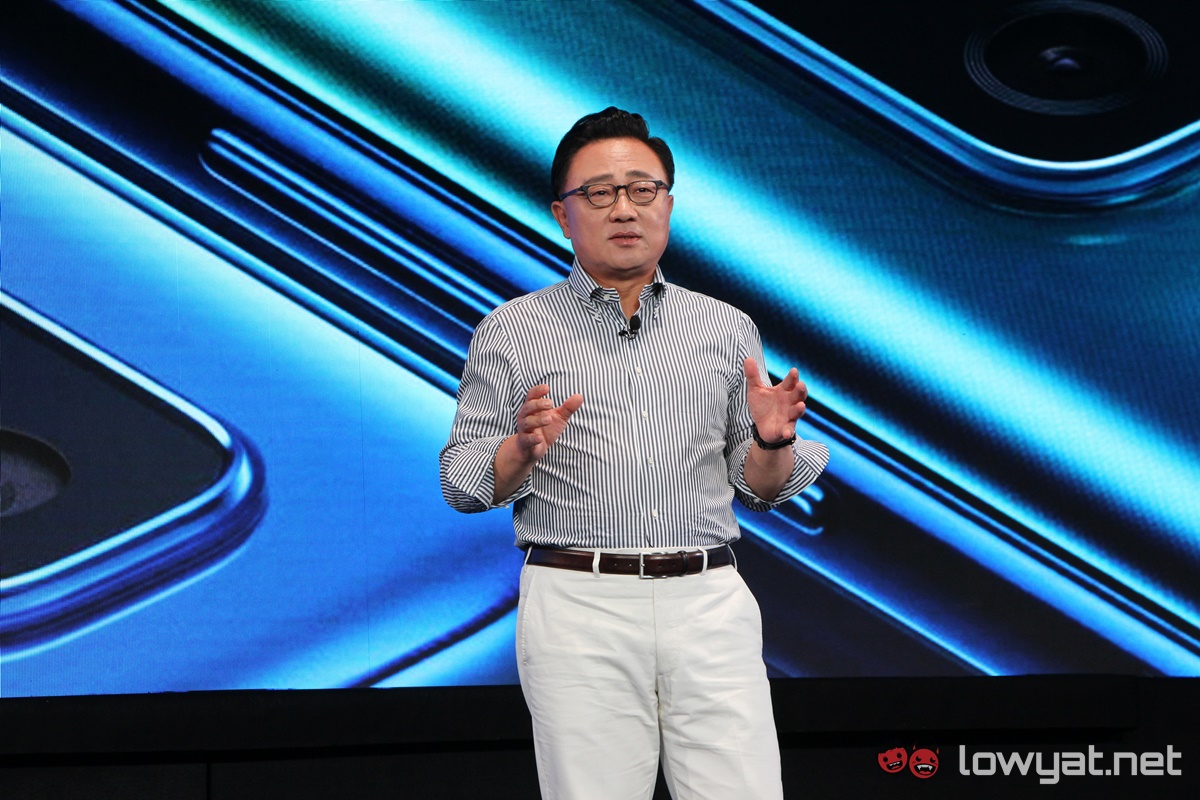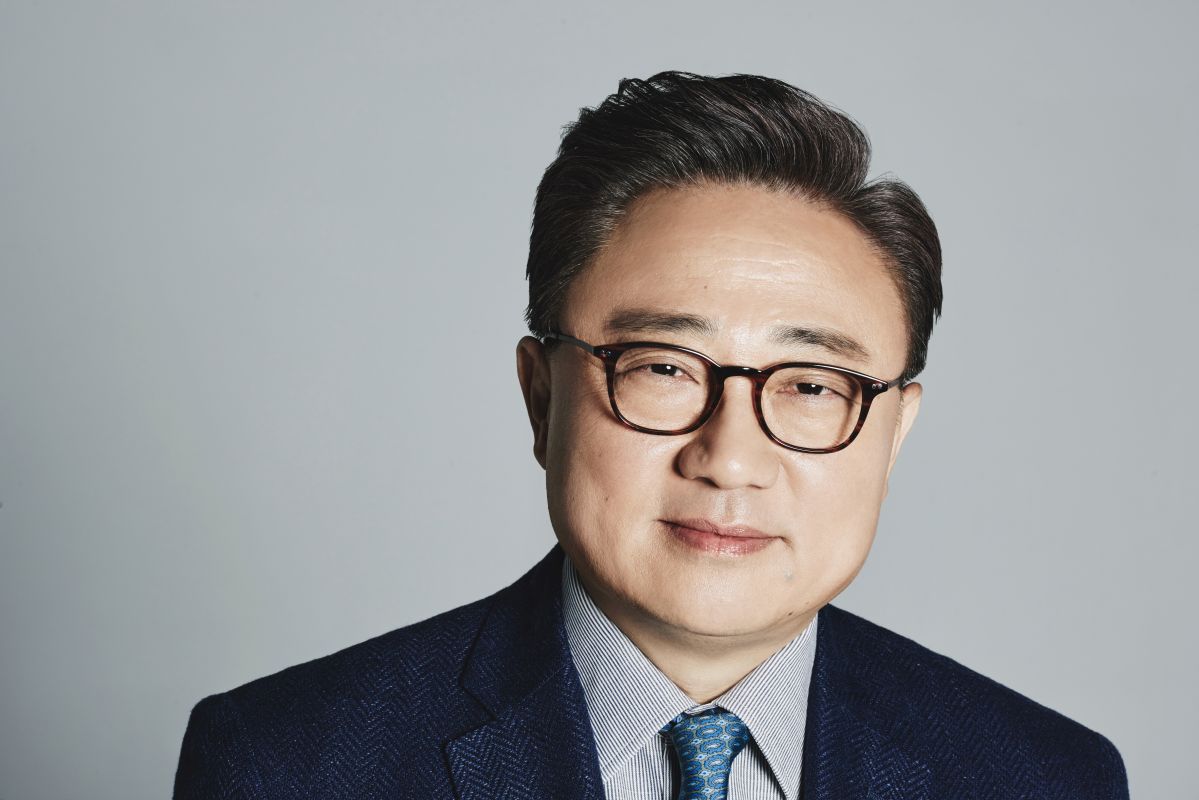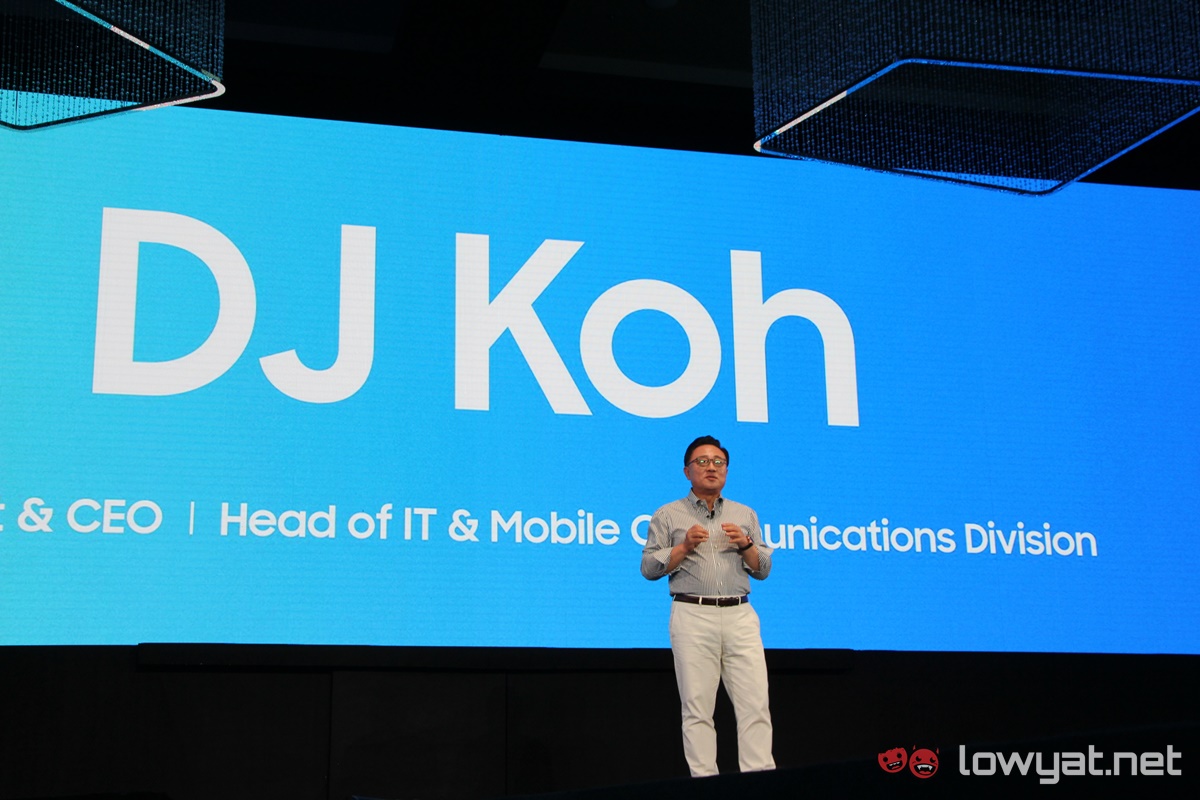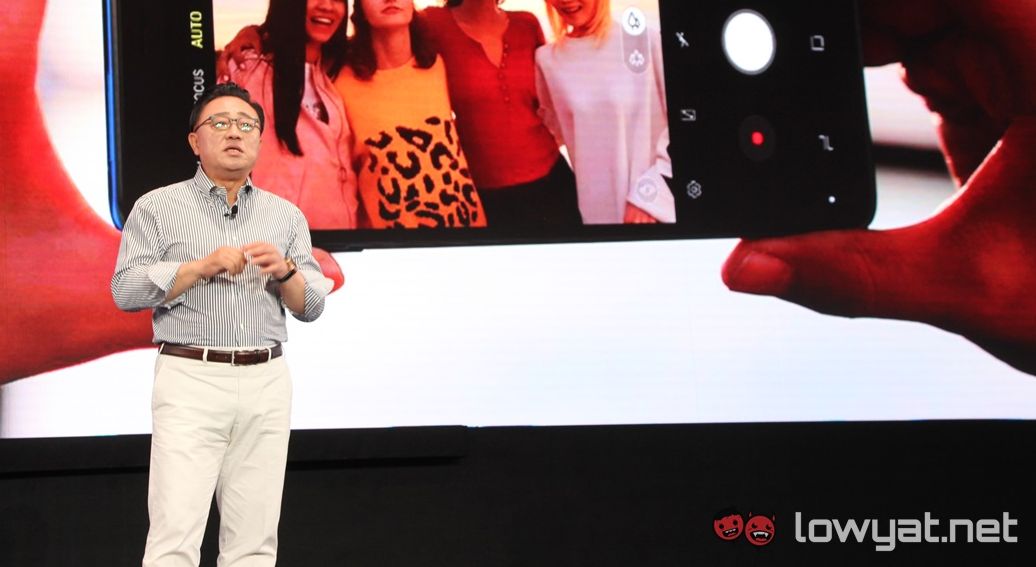Prior to the launch of the Samsung Galaxy A7 2018 and Galaxy A9 2018, we sat down with DJ Koh, President of Samsung Electronics, to speak about his company’s new mid-range flagship, the Galaxy A9 2018. During that time, we asked him several questions about his decisions and thoughts that made the phone. Along with other topics, such as the company’s take on the future of its Galaxy smartphones, AI, and VR.
Lowyat.NET (LYN): As far as our memory can recall, this quad-camera setup has never been done before in history of Samsung Galaxy devices. We’re curious: why did Samsung decide to equip the feature on a mid-range Galaxy A series flagship, instead of the flagship Galaxy S or Galaxy Note series?
That’s a very good question. In the last seven, eight years, we’ve been focusing on our high-end flagship models. Today, however, it’s become apparent that those very same flagship models cannot satisfy every consumer segment in our list. Among that list, millennials are one such customer base.
What this group is trying to pursue are Instagram pictures, cameras, and a phone with unique features that will allow them to express themselves. During our research, we realised that millennials – as well as customers with the millennial mindset, are not necessarily looking for everything in their flagship device. That’s the reason why we look at what kind of unique features we can deliver with to that market segment, which led us to create the Galaxy A7 2018 as well as the Galaxy A9 2018. The latter being the world’s first smartphone with a quad-camera setup.
On that note, this is why we think millennials can express themselves with the Galaxy A9 2018.

LYN: If I may add on to the question: Would we be seeing the quad-camera technology being applied to your higher-end end devices moving forward?
That depends. We have to see the market trend, customer’s voice, as well as the demand. Just because we have adopted the quad-camera setup with our Galaxy A series, it doesn’t necessarily mean that we will carry that forward to our other smartphone models. Again, it really depends on customer response. Samsung has always pursued meaningful innovation, after all.
LYN: While we know that 5G is not yet ready for primetime at the moment with consumers most likely will only start to see it in action from 2020 onward. Will 5G have significant impact on how Samsung design their future phones, tablets, and other devices?
We have been investing in a lot of 5G technology, patent and standardisations. Samsung is an end-to-end network company; we design and make our own modems, our own chipsets. But to understand why 5G is important, I’ll speak about IoT (Internet of Things). For the last seven to eight years, people talked about it. It is an idea that would’ve devices seamlessly connected to one another. But it never happened? The question is, why?
That’s because of time latency. With the current 4G networks, you’re averaging time latencies between 50ms and 100ms. That’s actually very slow. With 5G, the same latency is less than 1ms. In automotive terms; 50ms translates to a few metres, while 1ms is just a centimeter.
Applying 4G connectivity to IoT with that kind of latency? It’ll be a disaster. That’s why we need 5G for IoT. From an individual home to a factory, we need to move from 4G to 5G for IoT to be implement IoT efficiently.
We are also in the midst of creating a new cloud that would allow multiple devices to connect to each other. We also aim by having all Samsung devices connected to our cloud. We’ll also be releasing a new SDK/API based on that cloud technology during our developer’s conference that’s taking place this November.

LYN: Will the Galaxy A series be replacing your current Galaxy J series?
At the moment, we still have the Galaxy A series and the Galaxy J series for the market. We haven’t reached the conclusion yet, but we’re definitely looking at substituting the Galaxy J series with the Galaxy A series. Meaning that it’ll just be the Galaxy S series and Galaxy A series smartphones in the future.
That said, our focus is still on how we can deliver meaningful innovation and experiences in devices with periodical releases of new devices. Based upon our observation of the consumers.
LYN: Artificial intelligence is something that almost all smartphone manufacturers have been talking about. How about Samsung? Does AI still have a place with the brand’s Galaxy devices?
Samsung Electronics is a unique company. Besides smartphones, we also manufacturer white goods. Based on that, I have always thought how can we deliver a better and unique experience with our products for our customers. And I think AI could be a solution within the next five to 10 years.

LYN: We noticed that Samsung hasn’t mentioned or highlighted virtual reality since the Galaxy S9 launch. Is Samsung no longer interested in VR anymore? Or Samsung is looking into different kind of experience for their customers…augmented reality or mixed reality, perhaps?
We were the first company to deliver a VR headset for our mobile devices, and we have definitely invested a lot in the medium. However, the reason we haven’t spoken about VR for a while is due to a couple of issues. The first issue is content.
The second problem is a comfort issue: we noticed that customers who used our VR headset couldn’t use it for more than 25 to 30 minutes at a time. This was due to a lens problem, and we couldn’t overcome those limitations.
Today, we are heavily looking into incorporating both VR and AR (Augmented Reality). We haven’t decided which route to go with this yet, but we’re working closely with our partners on this. I’ve tested a prototype headset that actually incorporates both VR and AR, and it really delivers a much better experience with that combination.
Follow us on Instagram, Facebook, Twitter or Telegram for more updates and breaking news.



